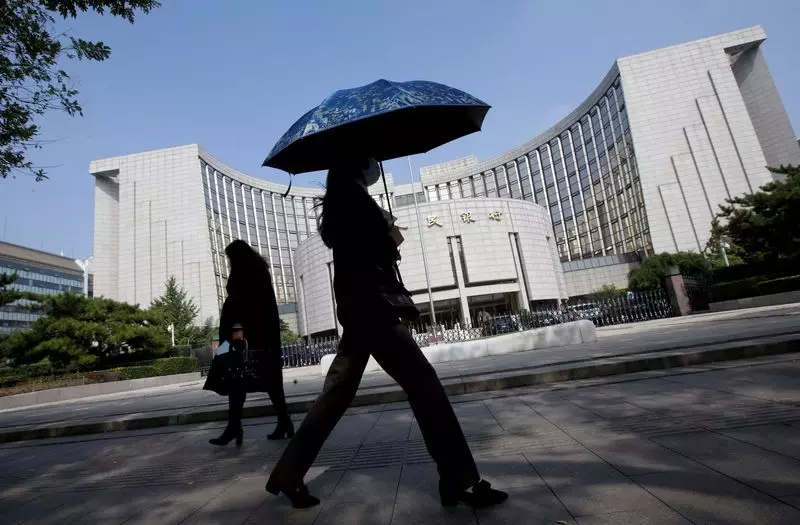In a surprising move that has left many analysts reeling, the People’s Bank of China (PBOC) opted to maintain its benchmark lending rates during its latest monthly fixing. While markets anticipated a shift in response to the Federal Reserve’s recent drastic interest rate cuts, the PBOC’s decision underscores the complexities of China’s economic landscape. With global financial dynamics shifting, especially following the Fed’s actions, the market had primed itself for a reduction in borrowing costs, only to be met with an unexpected status quo.
Current economic indicators illustrate the urgency for stimulus. Nevertheless, while the Federal Reserve had preemptively lowered rates, providing leeway for China’s central bank to act, the PBOC has chosen caution over immediate reaction. Both the one-year loan prime rate (LPR) and the five-year LPR remained locked at 3.35% and 3.85%, respectively. This divergence raises questions about China’s economic strategy moving forward, especially as it faces headwinds that could impede its growth trajectory.
The Context of Economic Pressures
Economic performance in China has recently shown signs of weakness, with a string of disappointing data relating to credit lending and broader economic activity. These metrics have prompted calls for stronger stimulus measures to invigorate growth and stabilize the economy. In a recent survey of financial experts conducted by Reuters, a significant majority—69% of participants—predicted that the lending rates would see a reduction, reflecting widespread concern about economic stagnation.
Economic analysts, including Xing Zhaopeng, a senior strategist at ANZ, speculate that the anticipated rate cut might indeed be part of a more comprehensive policy initiative. This proposed initiative, reportedly under review by senior officials, would ultimately suggest a significant re-evaluation of economic strategies in light of recent data trends. Furthermore, as lowering mortgage loan rates heavily depends on reducing the five-year LPR, speculation persists that a collective adjustment to LPRs could occur later in the year.
Chinese President Xi Jinping has emphasized the importance of achieving the country’s established annual economic and social development targets amidst these challenges. The weight of faltering economic activity is compelling policymakers to seriously reconsider their approach to monetary policy. Global financial brokerages have already begun scaling back their growth projections, estimating a rate below the Chinese government’s target of approximately 5% for 2024.
This shift in expectations nurtures a broader concern about China’s long-term economic stability and its ability to rebound from recent difficulties. The global economic backdrop is increasingly complicated by the divergence in monetary policies between China and major economies like the U.S., along with a weakening yuan, both of which have notably constrained the PBOC’s policy options.
Fed Rate Cuts Create New Opportunities
However, the recent 50-basis-point cut from the U.S. Federal Reserve has changed the playing field for China. Analysts at Commerzbank have suggested that the Fed’s gradual easing is opening up avenues for the PBOC to implement similar monetary policy adjustments without inciting severe repercussions for the yuan. The landscape, once fraught with fears of currency depreciation, now appears more navigable as the U.S. embarks on a new rate-cutting agenda.
This new backdrop is pivotal because most new loans in China are tied to the one-year LPR, while the five-year rate predominantly influences mortgage pricing. Hence, any shifts in these lending rates could have significant implications for consumers and businesses across the nation. As these economic pressures mount, the call for decisive action from central authorities grows louder.
As China grapples with these economic uncertainties, the central bank faces a critical test of its policy-making efficacy. Prospective rate cuts may be in the pipeline, but how and when such measures will be implemented remains to be seen. Analysts and market participants alike will be closely monitoring forthcoming policy dialogues, economic data, and global financial trends as they work to piece together an understanding of China’s future trajectory.
China’s current economic conditions necessitate prudent policy considerations that prioritize both stabilization and growth. The struggle to foster an environment conducive to recovery while balancing global market realities signifies a crucial juncture for the nation’s economic policymakers. As the situation evolves, stakeholders will be keenly observing which direction the PBOC takes amidst these conflicting pressures and uncertainties.

